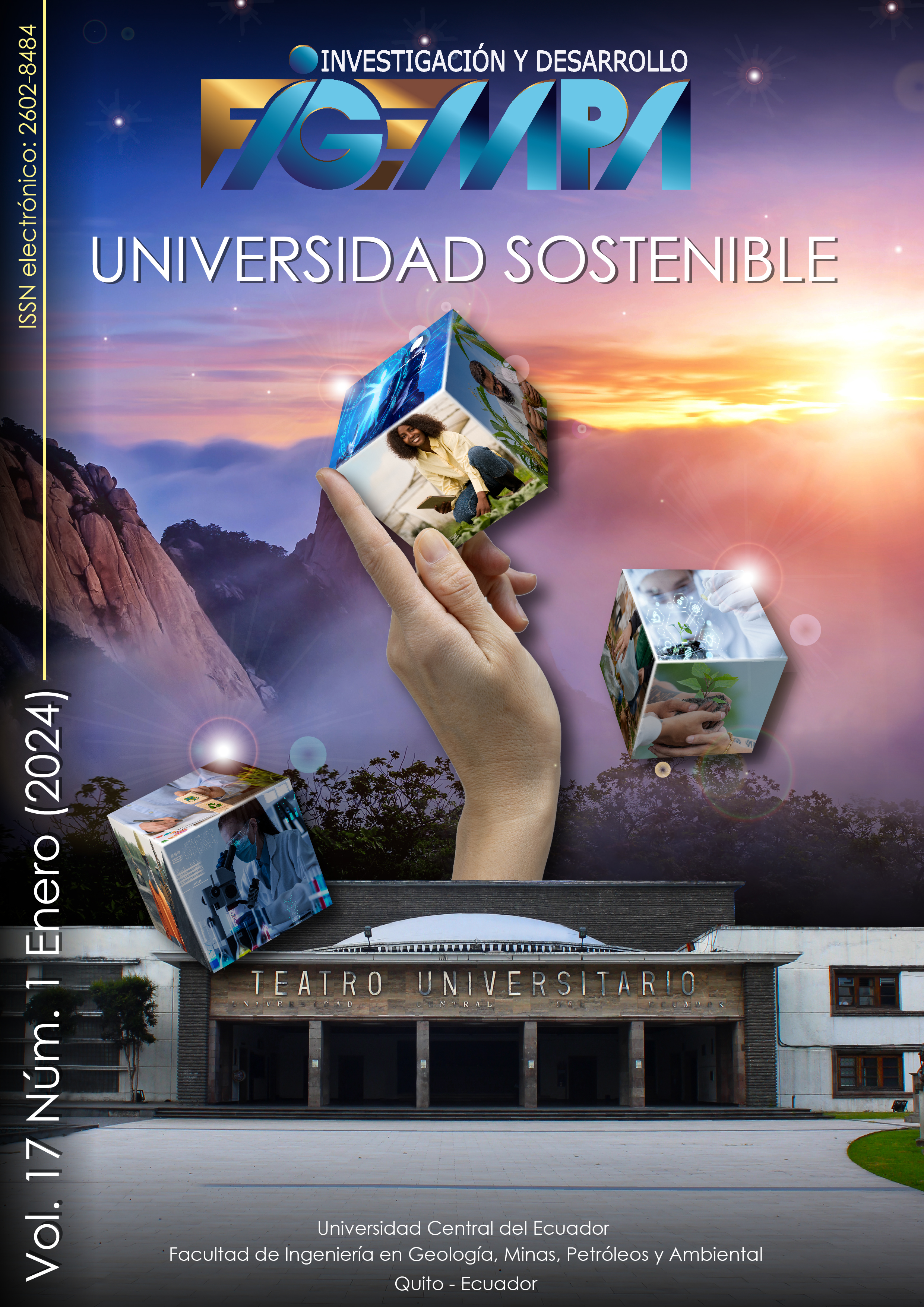Convenio de Minamata: Actividades desarrolladas en Japón y su incidencia en las emisiones de mercurio
Contenido principal del artículo
Resumen
La investigación presenta una recopilación de las estrategias en el manejo y gestión del mercurio (Hg) que realiza Japón como promotor y gestor del Convenio de Minamata. Este acuerdo fue establecido para reducir las emisiones antropogénicas de mercurio y prevenir su polución a nivel mundial. El artículo 14 del convenio establece la cooperación entre los gobiernos involucrados y la prestación de asistencia técnica. Es por ello que las actividades se desarrollaron en el curso de capacitación “Capacity building for ratification and implementation of Minamata Convention on Mercury”, llevado a cabo en Japón, en el cual participaron representantes de Ecuador, China, Sudán, Brasil y Armenia. Ecuador es uno de los países que ratificó en el 2013 este convenio, por lo cual es necesario comprender los esfuerzos desarrollados por otros países, desde una perspectiva práctica, para poder conocer su factibilidad y ser implementadas a largo plazo en el territorio nacional. Se describen las actividades implementadas, en Japón, como la recolección y procesamiento de residuos contaminados en la empresa Nomura Kohsan Co., Ltd. (Hokkaido), visita a centros de alta tecnología como el Instituto Nacional para la Enfermedad de Minamata (NIMD) y el Ministerio del Ambiente (MEGJ), y recorrido por el proyecto de restauración ambiental en la bahía de Minamata. Los resultados demuestran que las acciones y políticas adoptadas en Japón han reducido considerablemente las emanaciones de Hg llegando a mantenerlas en niveles estables, lo que ratifica el cumplimiento de los distintos artículos expuestos en el Convenio de Minamata. A pesar de que en Ecuador se han hecho esfuerzos para mitigar el uso de Hg, aun así, se encuentra entre los principales países contaminantes de la región. Las entidades privadas y gubernamentales deben esforzarse en planes de acción para mitigar la contaminación y llevar a cabo monitoreos periódicos de las emisiones de este metal.
Descargas
Métricas
Detalles del artículo

Esta obra está bajo una licencia internacional Creative Commons Atribución 4.0.
Citas
Ayme Huertas, I.A. et al. (2019) Riesgos a la salud y ambiente por el uso de lámparas que contienen mercurio. Revista Kawsaypacha: Sociedad y Medio Ambiente, (4), pp. 93-119. ISSN 2709-3689, ISSN-e 2523-2894. https://dialnet.unirioja.es/servlet/articulo?codigo=8577532&info=resumen&idioma=ENG (Accedido: 17 de octubre de 2022).
Bank, M. S. (2012) Mercury in the Environment. Pattern and Process, University of California Press.
Contreras, M.L. y Bahillo, A. (2018) El mercurio y la industria cementera. pp. 131-143. https://www.researchgate.net/publication/330312550_El_mercurio_y_la_industria_cementera
Cheng, Y. et al. (2023) A review of gold production, mercury consumption, and emission in artisanal and small-scale gold mining (ASGM). Resources Policy, 81. Disponible en: https://doi.org/10.1016/j.resourpol.2023.103370
Durán Lascano, J. (2008) Diagnóstico de la contaminación por mercurio en aguas y sedimentos de ríos que reciben efluentes de la minería de oro en los sectores de Nambija, Ponce Enríquez y Portovelo. Proyecto Fin inédito en Carrea de Ciencias Ambientales. Universidad de las Fuerzas Armadas ESPE, Carrera en Carrera de Ingeniería Geográfica y del Medio Ambiente.
Ediciónmédica (2016) Ecuador tiene alta contaminación de mercurio. Disponible en: https://www.edicionmedica.ec/secciones/salud-publica/ecuador-tiene-alta-contaminaci-n-de-mercurio-87503 (Accedido: 28 julio 2023).
Gundersen, C.B. et al. (2023) Mercury in the Barents region – River fluxes, sources, and environmental concentrations. Environmental Pollution, 333(June), p. 122055. Disponible en: https://doi.org/10.1016/j.envpol.2023.122055
Hennebert, P. (2022) Risk management of hazardous solid wastes by hazardous property including mercury containing wastes. Detritus, (20), pp. 78-89. Disponible en: https://doi.org/10.31025/2611-4135/2022.15212
Lara-Rodríguez, J.S. y Fritz, M.M.C. (2023) How does eliminating mercury from artisanal and small-scale gold mining lead to achieving sustainable development goals?. Natural Resources Forum, 47(2), pp. 214-228. Disponible en: https://doi.org/10.1111/1477-8947.12279
Mestanza-Ramón, C., Jiménez-Oyola, S., Gavilanes Montoya, A. V., Vizuete, D. D. C., D’Orio, G., Cedeño-Laje, J., Urdánigo, D., & Straface, S. (2023) Human health risk assessment due to mercury use in gold mining areas in the Ecuadorian Andean region. Chemosphere, 344 (October). https://doi.org/10.1016/j.chemosphere.2023.140351
Ministry of the Environment of Japan (2013) Japan’s Commitment to the Minamata Convention on Mercury. A voice from Minamata to the world. Tokyo. https://www.env.go.jp/content/900415048.pdf
Ministry of the Environment of Japan (s/f) Water, Soil, and Ground Environment. Disponible en: https://www.env.go.jp/en/index.html (Accedido: 25 julio 2023).
Minamata Disease Municipal Museum (2012) Exhibit Guide. Disponible en: https://minamata195651.jp/guide_en.html (Accedido: 25 julio 2023).
Minamata Disease Municipal Museum (2019) Minamata Disease. Its History and Lessons: Kumamoto Prefecture, pp. 17-20. https://minamata195651.jp/list_en.html
ONU (2019) Convenio de minamata sobre el mercurio. ONU programa para el medio ambiente Convenio de Minamata sobre el Mercurio, 17-20. http://www.mercuryconvention.org/Portals/11/documents/Booklets/COP3-version/Minamata-Convention-booklet-Sep2019-SP.pdf
Plan V (2020) Ecuador, ahogado en basura, está lejos de cumplir las metas de los ODS al 2030. Disponible en: https://n9.cl/wxbb (Accedido: 28 julio 2023).
Tassone, A. et al. (2023) Seven-year monitoring of mercury in wet precipitation and atmosphere at the Amsterdam Island GMOS station. Heliyon, 9(3) Disponible en: https://doi.org/10.1016/j.heliyon.2023.e14608
Union Nations Environment Programm (2013) Mercury, Time to act. Geneva: Division of Technology, Industry, and Economics Chemicals Branch, pp. 6-10. https://wedocs.unep.org/bitstream/handle/20.500.11822/27436/mercury_timetoact.pdf?sequence=1&isAllowed=y
Yorifuji, T. y Tsuda, T. (2014) Minamata, en P.B.T.-E. of T. (Third E. Wexler (ed.) Oxford: Academic Press, pp. 340-344. Disponible en: https://doi.org/10.1016/B978-0-12-386454-3.00038-5
Zhang, Y. et al. (2023) Improved Anthropogenic Mercury Emission Inventories for China from 1980 to 2020: Toward More Accurate Effectiveness Evaluation for the Minamata Convention. Environmental Science & Technology, 57(23), pp. 8660-8670. Disponible en: https://doi.org/10.1021/acs.est.3c01065

